Arriving in Kathmandu, you might feel exhausted yet energized. The air is filled with the fragrances of incense and dust, while the lively sounds of rickshaws, music, and café conversations make the city feel immediate and vibrant. The clatter of cups in the cafés lines the roadside, music and rickshaws fill the streets of Thamel. Alone with just your backpack and thoughts, you weave through buzzing motorbikes and pause at tranquil temples, wondering if solo travel here is safe—and if choosing this path was truly the right adventure for you.
Nepal isn't a picture-perfect postcard—it's raw, honest, and beautifully unpolished, where every winding street and temple pause reveals unexpected kindness and a vibrant world waiting for solo travelers to discover. Shopkeepers greet visitors warmly with "Namaste" and "Hello," not to sell but because it's part of their culture. From elders to children, strangers often show curiosity and willingness to help, communicating warmly, even with a few shared words.
Traveling solo anywhere requires responsibility. Travelers share stories of illness from water, overpaying for rides, or taking the wrong paths in fog. If you're unsure whether Nepal is the right destination, you might be asking: Is it safe? Is it worth it? Should I wait? Should I look beyond Nepal? To put your mind at ease as you navigate bustling streets, pause at serene temples, and experience Nepal's raw and authentic charm, we've created the ultimate guide for solo travelers—helping you explore freely and confidently, with no doubts holding you back. Dive in and discover your next adventure!
Is Nepal Safe for Solo Travellers? A Grounded Look at Reality
Nepal is generally known as welcoming and relatively safe for solo travelers, thanks to its deep hospitality, spiritual traditions, and many solo trekking success stories. However, safety is not guaranteed. Like many developing countries, Nepal has infrastructure challenges and occasional petty crime. Much of the experience depends on your awareness, planning, and decisions made on the ground. It's not a simple yes-or-no answer. Exploring Nepal solo is about embracing the journey with confidence and flexibility, guided by the correct information. Our guide helps you navigate these choices so you can travel safely and freely, making the most of every moment in vibrant Thamel and beyond.
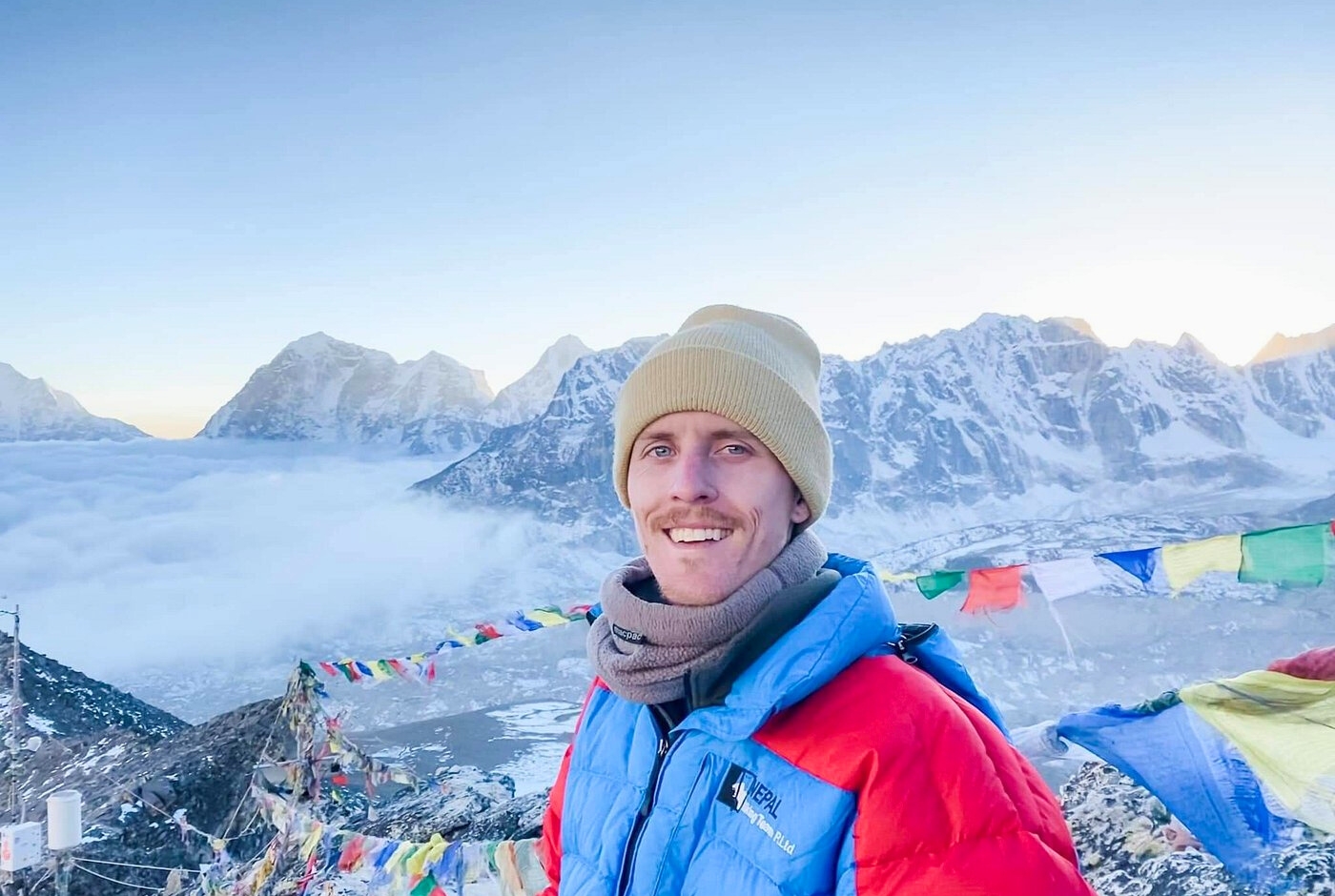
Political Unrest and Civil Strikes: Stay Informed, Stay Away
Notwithstanding its outward tranquility, Nepal has a turbulent political past. Instability, which may lead to conflicts, can happen suddenly. They include regular protests, strikes, and demonstrations. The social rhythm of the nation, especially in urban areas like Kathmandu's Maitighar, can get out of control; therefore, avoiding crowds and large gatherings to stay safe is significant.
Roads may be closed, and public services may be interrupted during these times. Tensions can rise near government buildings, and transportation stoppages may occur. Foreign embassies or offices may also be affected. Large gatherings should be avoided altogether, as curiosity can lead to the wrong situation at the wrong time.
If a Nepal bandh (strike) is declared, prepare accordingly: transport may halt, shops close, and movement becomes difficult. Staying informed through trusted news outlets or your accommodation staff for current updates is suggested.
Transportation
Traveling in Nepal can be uncertain. Outside urban areas, roads are often narrow, rough, and susceptible to landslides outside metropolitan areas, particularly during the monsoon season. In cities such as Kathmandu, Chitwan, and Pokhara, traffic is disorderly, with irregular regulations and varying vehicle maintenance. Public transportation, like buses and vans, frequently becomes overcrowded and carries a higher risk of accidents. Private vehicles booked through hotels or tour operators are preferable for safety and comfort.

Choose private vehicles if you want dependability and peace of mind. Organized by respectable travel agencies or hotels. Far-flung traveler vehicles that travel between well-known locations like Chitwan, Pokhara, and Kathmandu provide a more secure option, but patience is still needed.
City taxis can be unreliable, with many drivers avoiding meters and haggling fares. Using ride apps like Pathao or InDrive offers transparent prices and GPS tracking. Limit late-night travel to essential, pre-arranged rides to reduce risks.
Airports, Flights, and Helicopter Transfers: What You Should Know
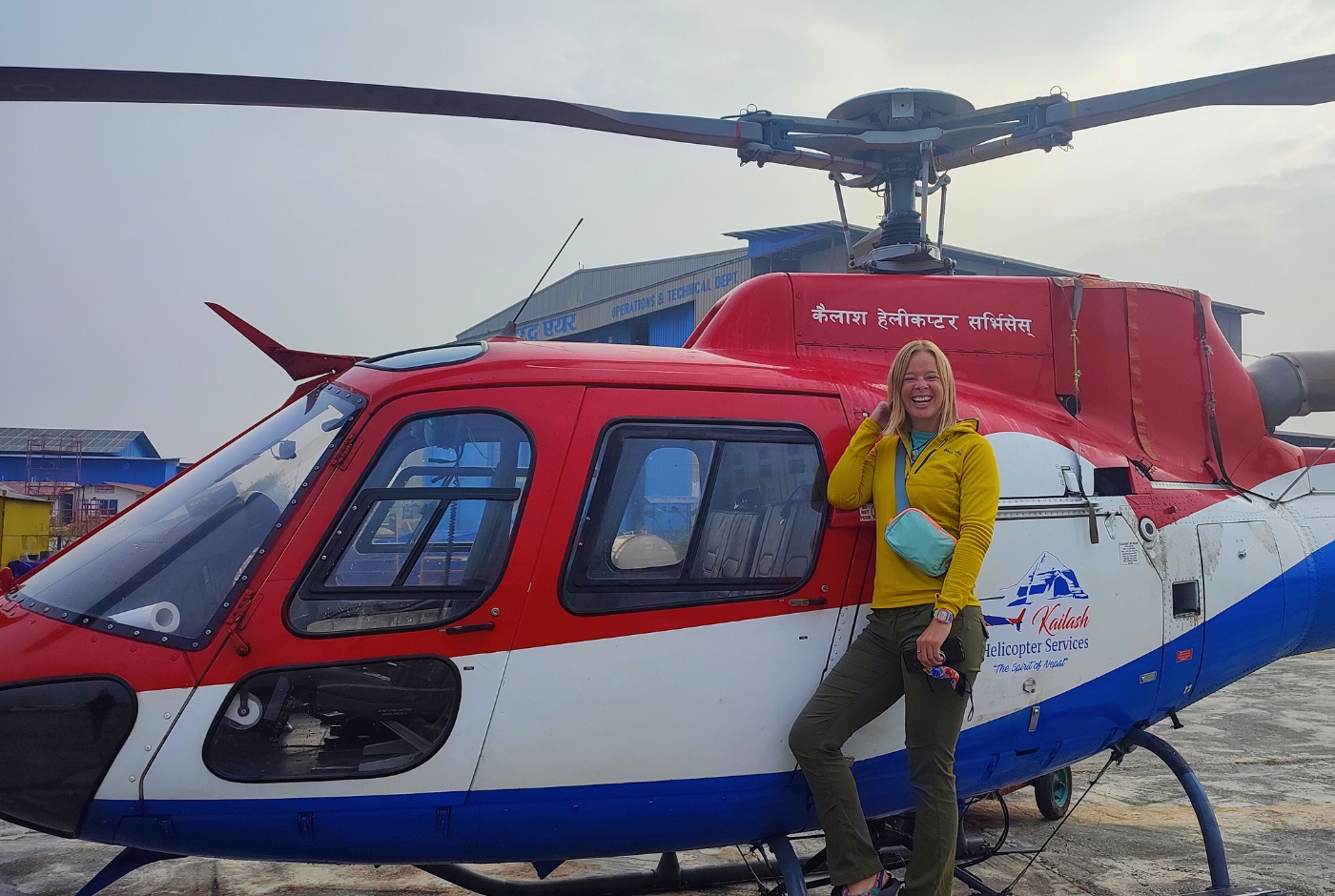
Domestic flights connect remote regions but face difficulties. Lukla Airport, the gateway to Everest, is known as one of the world's most dangerous airstrips due to short runways and challenging weather. Delays and cancellations are common; flexibility is essential. Book with reputable airlines and confirm flights beforehand.
Plan for delays and cancellations because they happen frequently. Domestic airlines fly tiny aircraft with varying safety records. The risks are real, even though the majority of flights are incident-free. Booking flights via reputable airlines is always necessary, and double-check your reservation information well in advance before pursuing your journey.
Helicopter services provide emergency evacuations and quicker travel but are costly and not always covered by insurance. If trekking above 3,000 meters, ensure your insurance covers medical and rescue operations. The efficiency of Heli tourism is comparable to that of all air travel. Nepal is at risk due to its topography and climate.
Understanding Crime in Nepal: What's Common and What's Not
Compared to global levels, crime rates in Nepal are relatively low. Violent crimes targeting tourists are uncommon, with most incidents involving petty theft, such as pickpocketing, occurring in crowded places, especially Thamel, Ratna Park, Asan Bazaar, Gongabu Bus Park, and around overcrowded temples. Awareness and vigilance in these areas will help you enjoy your visit safely. Use basic caution: keep valuables hidden, avoid walking alone at night in secluded spots, and trust your instincts if a situation feels wrong.
The most frequent problems are pickpocketing in crowded places and stealing phones or unattended bags. It's not about fear but awareness. Don't show off your valuables or make assumptions—staying vigilant is key to your security. Tourists sometimes report bag snatching, especially when walking alone late at night in quiet or dimly lit alleyways and neighborhoods outside Thamel. While this may suggest the city is dangerous, this is not true. Basic street smarts are essential.
If a stranger is insistent on taking you somewhere, something doesn't feel right, or when you see someone who makes an arbitrary money demand following you, believe your gut. Enter a local café or store and stay away from additional interaction. If uncomfortable, seek help from locals or businesses. Nepali people are generally helpful and proud of their country.
Trekking Safety: New Rules, Real Risks - 2025/26
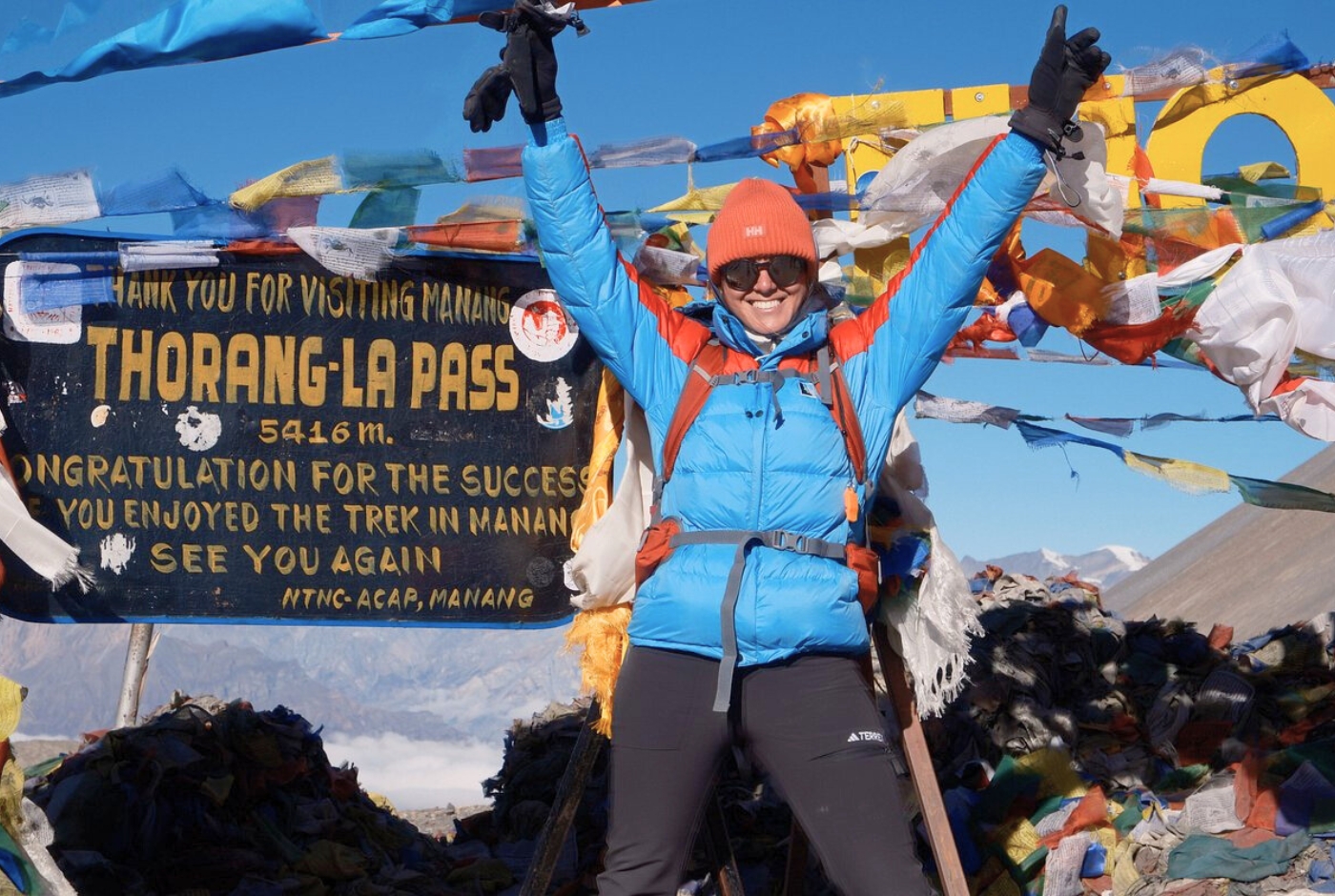
Since April 2023, solo trekking in national parks has been prohibited. Hiring a licensed guide is mandatory in popular areas like Annapurna, Langtang, and Everest to prevent incidents involving lost or ill trekkers. Guides improve safety by knowing the terrain, weather, and emergency protocols, and they support local employment.
Hiring a guide will help you stay within the rules and increase your safety because they will know the terrain and weather patterns, how to handle emergencies, and where to find help. It promotes vital jobs in the area.
Altitude Awareness

Altitude sickness is a serious risk regardless of fitness. Prevent it by acclimatizing gradually—drink water, rest properly, avoid alcohol, and ascend slowly over 3,000 meters. Medical help is limited in the mountains, and evacuations are expensive without insurance.
Infrastructure: Travel and Health
Nepal's infrastructure varies widely. Roads outside the cities can be slow and hazardous, especially during the monsoon season, when landslides are common in the monsoon season (June to September). The map indicates a travel time of about five hours, which can extend to seven or more. That's quite a journey. Tourist buses are available, and it's worth paying extra for them because they offer slightly higher safety standards and more comfort. Reaching destinations like Lukla or Jomsom often requires flying, as it's usually the only practical choice. However, Nepal's domestic flight safety record has its challenges. Weather frequently causes delays or cancellations, and the mountainous airstrips pose difficulties even for skilled pilots.
Solo travelers should also prioritize their health and hygiene while in Nepal. Tap water is unsafe, so always use bottled water, filtered water, or purification methods like LifeStraw or purification pills. Gastrointestinal issues are common, especially if you eat from places with questionable hygiene. Avoid raw or uncooked street food, meat from isolated areas, and vegetables washed with tap water, as refrigeration cannot always be guaranteed. Keep clean water and soap handy since hand sanitizers may not always be available. A small first-aid kit is essential for minor issues like headaches, altitude effects, or blisters and can save you a lot of trouble.
Natural disasters
Nepal is prone to earthquakes, landslides, and floods. The 2015 earthquake showed the country's vulnerability, with some buildings still not fully earthquake-proof. Trail closures are common during the monsoon season, and delays happen frequently. Before you travel, always check for seasonal risks—especially if you plan to visit isolated or high-altitude areas.
Culture and Conduct: How You Act Matters

Modest dress is essential, especially in rural areas and religious sites. Public displays of affection are discouraged. When traveling in Nepal, especially in rural areas and places of worship, it's crucial to dress up decently, remove your shoes before entering homes or temples, and avoid pointing your feet at sacred objects. Your actions influence the local treatment of you. Arrogance or carelessness isolates you, but respect and curiosity open doors.
Traveling solo in Nepal means you may attract attention. Respectful behavior and genuine interest in local culture earn kindness and support from the Nepalese, who are generally helpful and protective of visitors. Your behavior influences how locals treat you. Respect and curiosity open doors; arrogance or carelessness isolate you.
When Is the Best Time to Visit Nepal—and When Should You Avoid It?
If you want to travel, explore national parks, or take in the scenery at its best, picking the ideal time to visit Nepal can significantly impact your trip. Seasonal variations result from the strong influence of the Himalayan climate on the nation's weather. Knowing what to expect during each season will make planning easier and help you travel more safely.
Spring
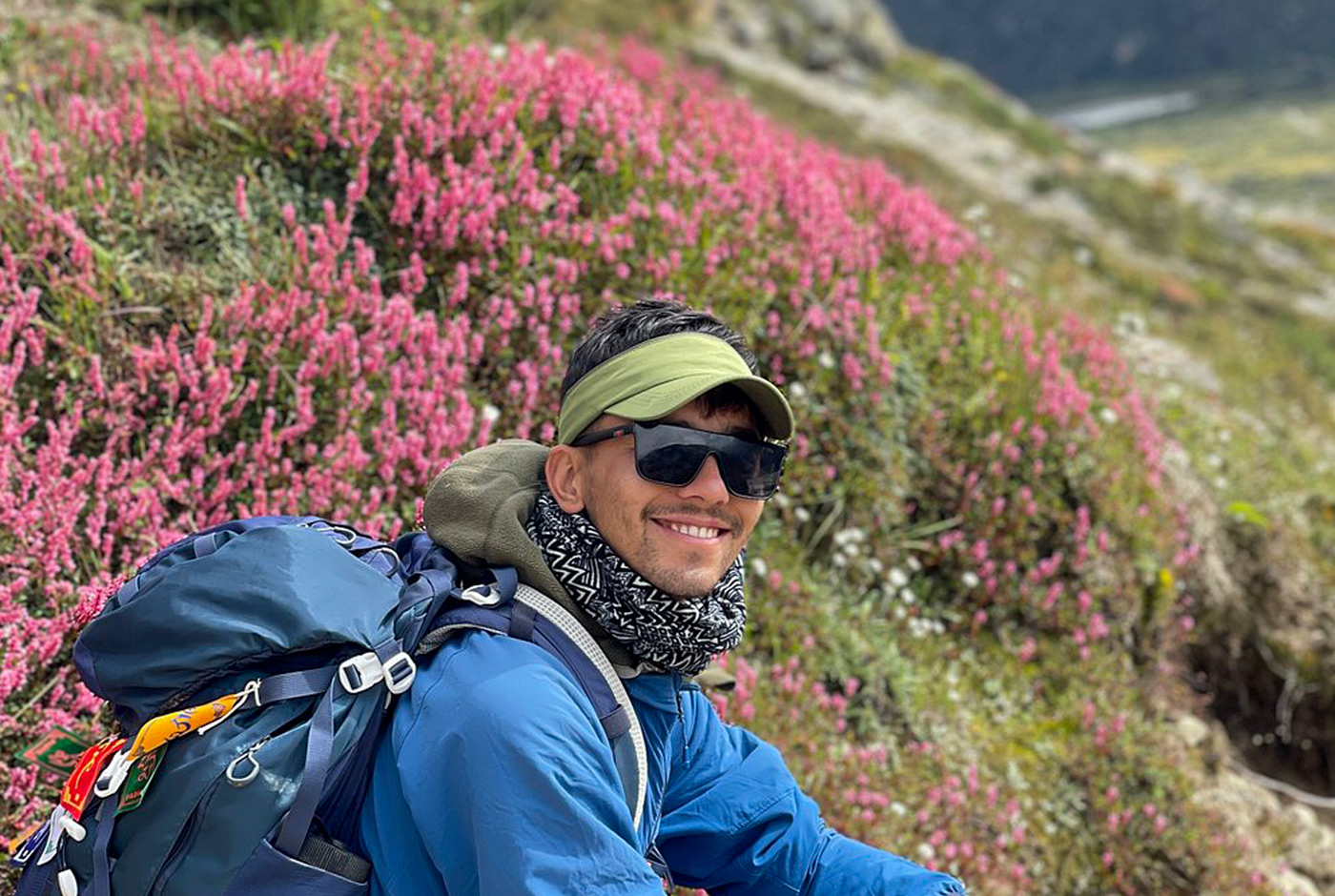
Traveling to Nepal is most comfortable and popular in the spring and fall. The country blossoms from March to May, both literally and symbolically. The hills are covered in rhododendrons as the weather warms and becomes moderate, with typically good visibility on trekking routes. It's cool, not so hot that it drains your energy, but just warm enough for comfort. This time of year particularly appeals to those who enjoy mountain or high-altitude hiking and photography. Particularly in lower regions, the likelihood of experiencing pre-monsoon haze and humidity rises as May progresses. Seasonal variations in the country's weather result from the Himalayan climate.
Autumn
The best time of year to visit Nepal is in the fall, from late September to late November. The dust has settled, and the skies are blue and bright after the monsoon rains. Travelers have a rare chance to take in Nepal's vibrant culture and rich customs during this time, coinciding with significant cultural festivals like Dashain and Tihar. Due to the pleasant temperatures and good trail visibility, these months are ideal for mountain trekking and city sightseeing. However, because of the favorable conditions, popular trekking routes and accommodations are often crowded, so it is strongly recommended to make reservations in advance. Autumn is a popular travel season because it blends breathtaking natural beauty, vibrant culture, and perfect travel conditions.
Winter

Winter, lasting from December to February, can still be a good time to visit Nepal, but with some critical considerations. While the lowland areas enjoy mild weather, making it a great season to explore destinations such as Chitwan National Park or Lumbini, the mountain regions experience a sharp drop in temperature. Snowfall often blocks higher mountain passes, limiting access. However, winter provides a tranquil experience with serene trails and breathtaking snow-covered landscapes for travelers who prefer fewer crowds and don't mind dressing warmly. Trekking remains feasible at elevations below 3,000 meters, particularly in the lower Annapurna or Ghorepani regions. Plan smart, respect local customs, stay alert, and choose safe travel—so you can fully enjoy Nepal's stunning landscapes and vibrant culture through every season!
Summer
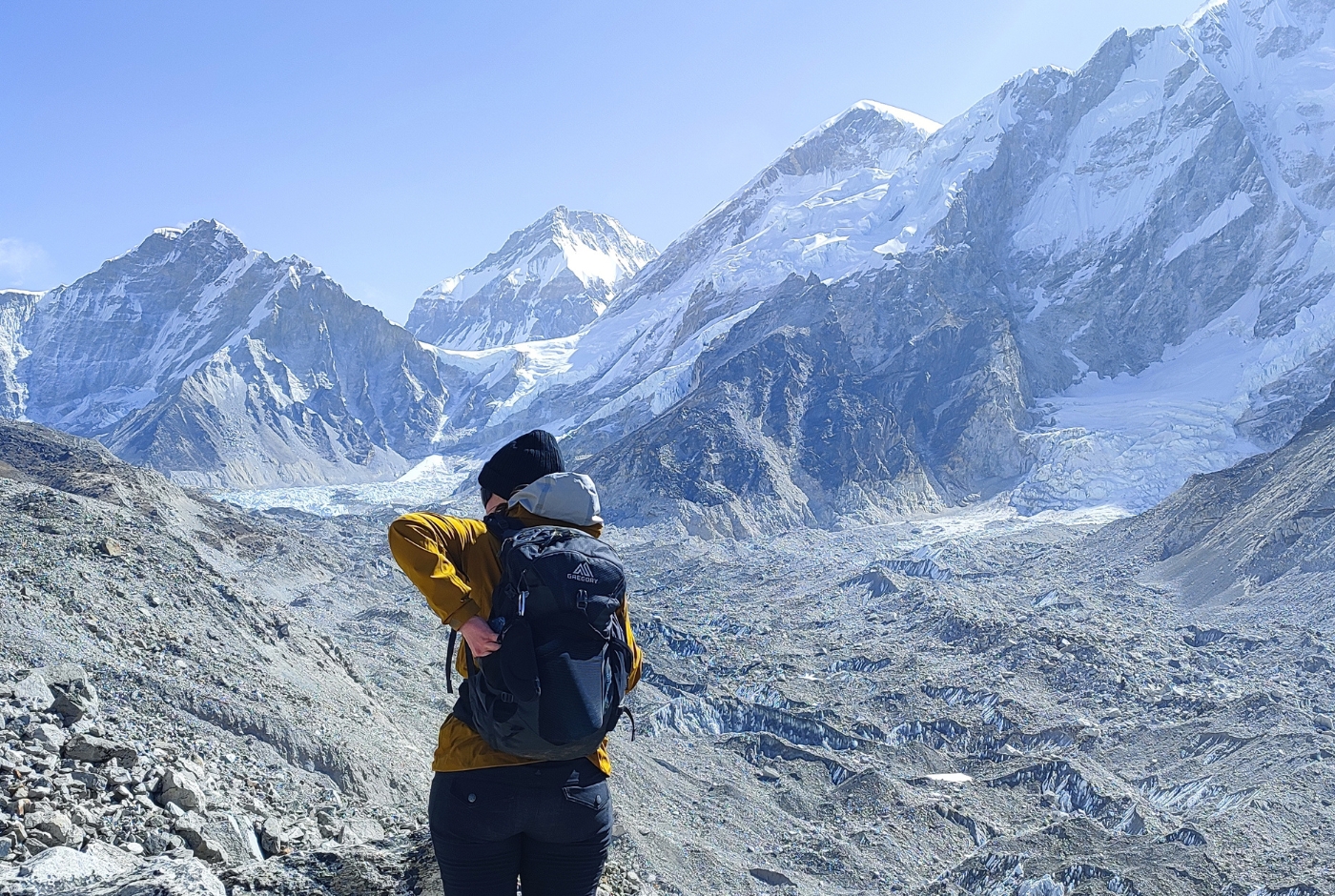
However, the summer monsoon season, from June to August, is usually considered the worst time to travel to Nepal, particularly for hikers. Heavy rains frequently cause landslides in the mountainous areas and make trails slick. Flooding can hamper travel, and leeches are a common nuisance on some trails. The chance to enjoy views of the mountain peaks is limited by poor visibility and extremely unpredictable weather during this time. Not all areas are impacted equally, though. In the rain shadow of the Himalayas, the Mustang region is one of the few places where trekking is still pleasant during the monsoon season because it stays comparatively dry.
If safety is your first concern, avoiding traveling to Nepal during the busiest monsoon months is best. Landslides, damaged roads, and delayed flights make travel more difficult during this time. Furthermore, political protests are more common during national holidays and times of governmental transition, which could coincide with the monsoon season. While demonstrations in Nepal rarely target tourists, they can create tension near government sites and Kathmandu's center. Choose safer transport options and keep flexible travel plans to navigate unpredictable conditions, have a more satisfying experience, and thoroughly enjoy the country's stunning landscapes and rich artistic heritage.
Mid-March to May and late September to early December are usually the best and safest times to travel. A carefully thought-out trip during these times of the year can produce some of the most enriching and unforgettable travel experiences, completely immersing yourself in Nepal's magnificent scenery and rich customs.
Is Nepal Safe for Solo Female Travellers? What You Still Need to Know
Nepal remains one of South Asia's most welcoming destinations for solo female travelers. Many women share stories of forming meaningful connections, experiencing respectful interactions, and navigating urban areas and mountain paths comfortably. However, your experience can differ based on your destination, how you carry yourself, and your decisions while there. Traditional social values are still deeply embedded in Nepali culture. As a solo female traveler, particularly from overseas, you might attract extra attention, often out of curiosity, though sometimes it may feel intrusive. Understanding these cultural quirks and scheduling your vacation for a safer, more convenient time of year, such as spring or fall, can improve your comfort and enjoyment and enable you to take in all of Nepal's breathtaking scenery, lively celebrations, and friendly people.
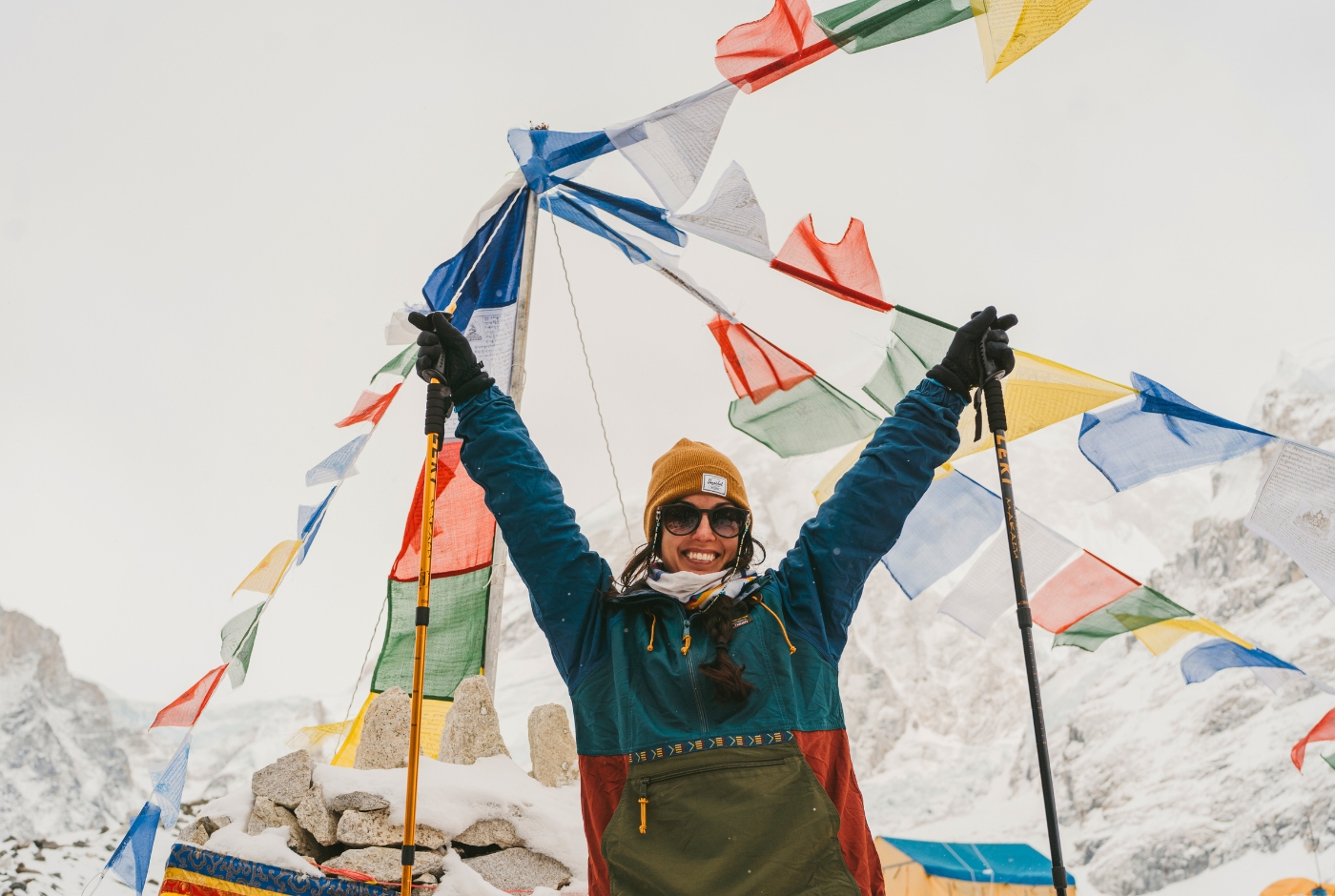
Kathmandu, the capital city, is generally safe during the daytime, especially in popular areas such as Thamel. However, as with any city, it's essential to remain vigilant after dark. While serious crimes are very uncommon, incidents of minor theft and occasional harassment can occur. Showing confidence while remaining polite is highly effective, as Nepali culture respects courtesy and recognizes self-assurance. To prevent unwanted attention, you should confidently and courteously leave any uncomfortable situations you encounter in Nepal.
The environment in smaller towns and rural villages often feels even more secure, but Nepal's areas are more traditional. While locals are generally friendly and curious, there are stronger expectations regarding modesty and public conduct. Dressing modestly in Nepal shows respect for local culture, helping solo travelers blend in and build positive connections, especially with elders and women. You can enjoy Nepal's stunning landscapes by combining this cultural awareness with traveling and practicing self-assurance and civility in cities like Kathmandu.
It is important to be mindful that some Nepali men may romanticize Western women, seeing them as a gateway to the outside world or a source of financial opportunity. Even though most people have good intentions, exercising caution is a good idea if someone gets too personal too quickly. This doesn't mean avoiding all interactions—many genuine friendships are formed—but setting clear boundaries and building trust gradually is essential. Enjoy a safe and delightful trip while thoroughly appreciating Nepal's rich customs and beautiful trekking trails.
Nepal's popular trekking routes are generally safe for women, supported by regular patrols and community lodges, but hiring a certified guide remains essential due to confusing trails and unpredictable weather. While some solo female travelers complete treks independently, most advise traveling with a registered guide or joining a group for increased safety and companionship.
It is still a reasonably safe destination for women of African or African-American heritage, though you might encounter more questions than you're used to. While this curiosity usually stems from genuine interest, staring is common in Nepal and can sometimes feel overwhelming. Many locals may not be familiar with the broader cultural backgrounds or histories of visitors from Africa. Frequently, awkward questions or comments arise from ignorance rather than malice.
You can confidently and safely traverse Nepal's rich and varied cultural landscape by adopting self-assurance, polite conduct, and the assistance of trained trekking guides.
Things to Remember for Solo Female Travellers in Nepal
Navigate Nepal with confidence: essential safety tips for solo female travelers :
- In cities such as Kathmandu, solo travelers—especially women—should avoid walking alone after dark in secluded or dimly lit places to stay safe.
- Always opt for verified taxis or use trusted ride-hailing apps when traveling late at night.
- Dressing modestly, particularly outside tourist areas and in rural towns, can help minimize unwanted attention.
- Choose accommodations carefully—avoid low-quality hotels, as cheaper options may compromise your safety; always read reviews before booking and trust your instincts.
- When taking a taxi, record the license plate number before entering.
- If anyone—a guide, vendor, or stranger—makes you feel uneasy during your travels in Nepal, confidently walk away without explaining.
- Even on well-known trekking routes, hire a certified guide even on popular trekking routes due to unpredictable weather and confusing trails.
- If approached romantically, maintain clear personal boundaries and don't assume intentions are harmless.
- Document incidents with photos for your records in case of suspicious incidents.
- Travel smart in Nepal: read reviews and trust your instincts when choosing accommodation
Responsible Tourism in Nepal:
Set on a solo journey in Nepal, an unbeatable way to experience Nepal's breathtaking Himalayan landscapes and ancient spiritual traditions that date back centuries. Acknowledging and honoring this excellent location requires them to remember they are visitors in a culture shaped by unique values, customs, and unspoken social conventions. Something deemed appropriate in another context could be interpreted as intrusive or disrespectful. Behaving thoughtfully and being conscious of how your presence affects local communities are also important aspects of responsible travel in Nepal, apart from preserving the environment.

Dress and Respect
One of the first things travelers notice in Nepal is the modesty of the local people's clothing, even in hot weather. Locals take great pride in their sense of decorum, and visitors who dress similarly are seen as respectful and courteous. People's revealing clothes, displaying affection publicly, or walking shirtless—even in remote areas—can make others uncomfortable.
When visiting Nepal's temples and religious sites, dress modestly by covering your shoulders and legs, remove your shoes before entering, and move clockwise around stupas or prayer wheels to show respect. Small acts of respect speak volumes about your humility and cultural awareness.
Respectful Interactions: How to Greet?
In Nepal, social interactions follow unique cultural cues that show respect and understanding. Bringing your palms together and saying "Namaste" is a respectful gesture when greeting others. Avoid touching anyone's head, especially children, and refrain from stepping over people or sitting higher than elders in a family home. When handing over items, it's customary to hand over items with the right hand supported by the left, particularly when giving something to monks, elders, or hosts. Instead of pointing with your finger, indicate people or objects with an open hand or a nod. Using your right hand for giving, receiving, and gestures is key since the left hand is traditionally considered unclean and inappropriate.
Mindful Photography
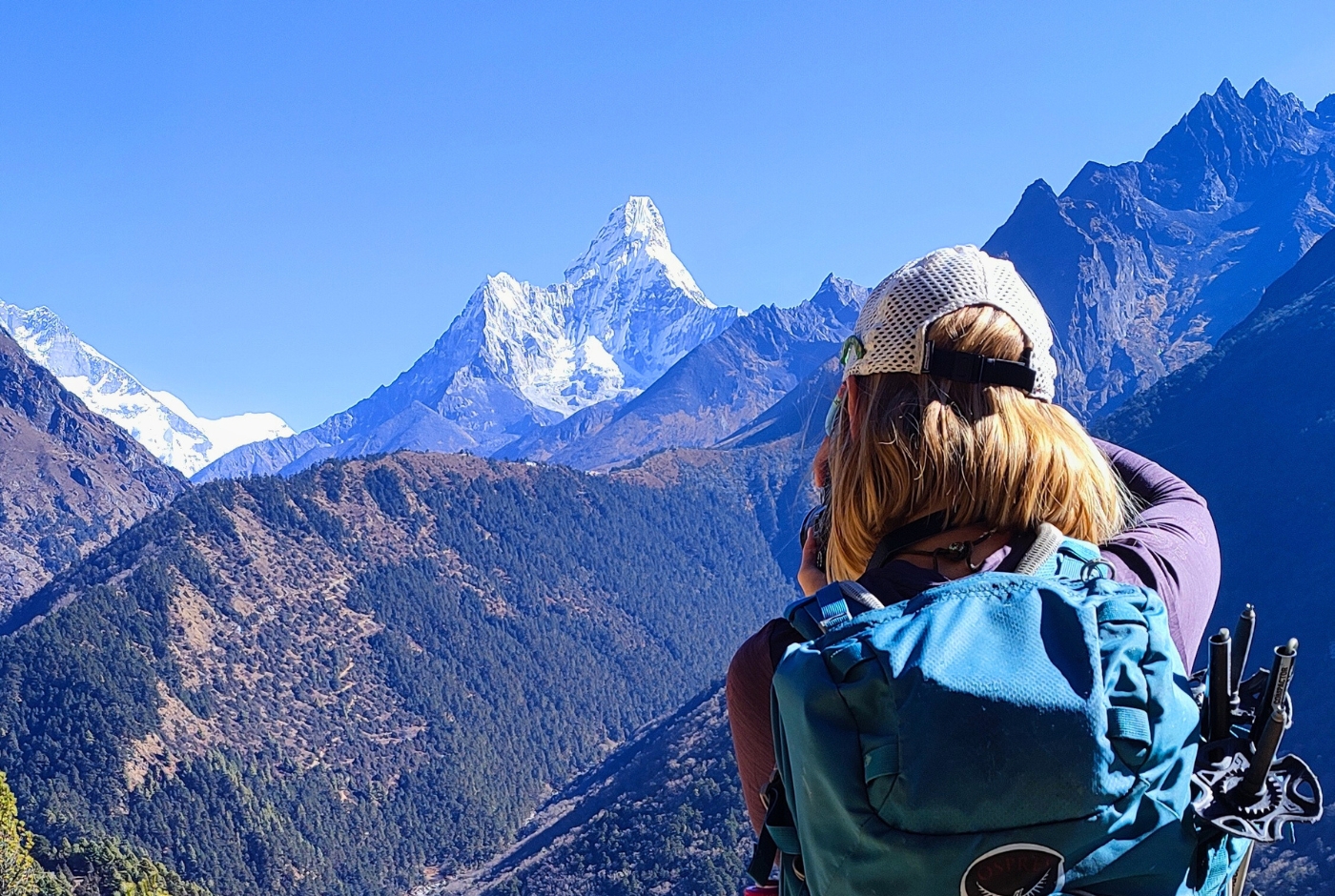
Capture Nepal's stunning landscapes with respect—always seek permission before photographing people or ceremonies, communities, restricted areas, or religious sites, especially in rural communities. Personal events such as cremations, bathing rituals, or temple blessings hold spiritual significance and should not be treated as tourist spectacles. What you witness during these moments is sacred; sometimes, observing quietly conveys more respect than any photograph. While it's meaningful to capture the vibrant stories of everyday life in Nepal with respect and sensitivity.
Dining Etiquette
In Nepal, guests are expected to wait for their host's invitation before sitting down, and it's customary to accept a second serving and praise the host's cooking. Always use your right hand when eating or passing the host's, as the left hand is traditionally considered unclean. Finishing your plate is also considered a sign since leaving food behind may be interpreted as disrespectful.
In Nepal, meals are typically individual, with sharing from the same plate uncommon, and food touched by lips is considered impure ("jutho"); when dining in homes or local eateries, wait for the host to serve you, while tourist restaurants usually provide cutlery.
In Nepal, cows are sacred, worshipped, and protected by law, making their slaughter illegal, and although eating beef isn't strictly forbidden, it is culturally discouraged, especially among Hindus; instead, buffalo meat is commonly eaten and widely accepted.
Supporting Local
Spending money thoughtfully on where and how you travel is integral to responsible tourism. Supporting local businesses—whether family-run guesthouses, mountain tea shops, handicraft stores, homestays, or individual households—ensures that your expenses directly benefit the communities. Choose smaller, local eateries over large tourist chains, as the former often employ locals and use regional ingredients. Shop at local craft stores or marketplaces to support Nepali artisans and their families.
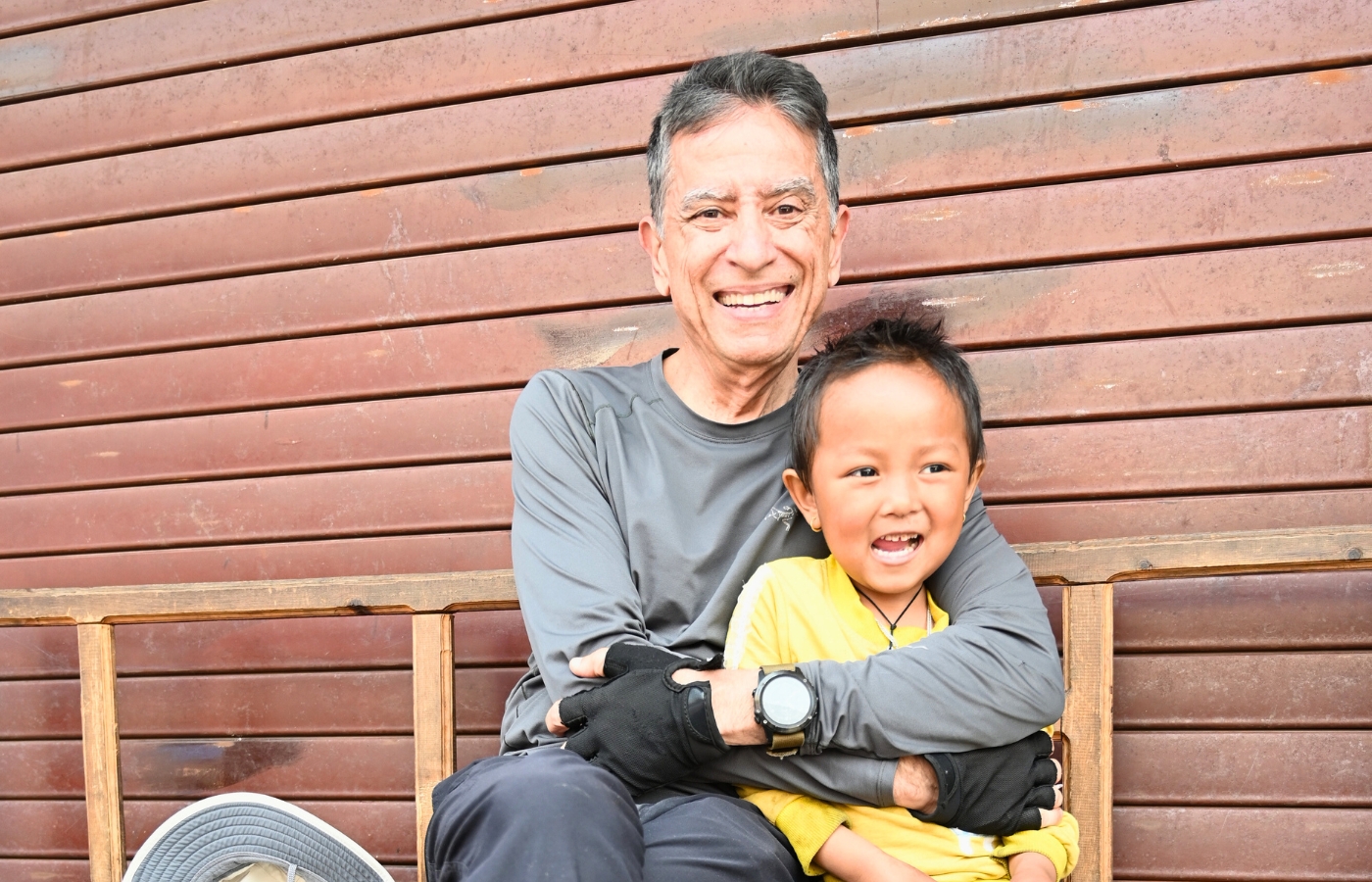
This also applies to employing porters and local guides, beyond the valuable assistance. These people frequently have knowledge and stories to share that will keep you informed about the locations you are visiting.
Some trekking programs in Nepal, like the Khopra Ridge Trek, focus on supporting local communities by offering authentic cultural experiences and opportunities to visit schools, orphanages, and community projects, allowing travelers to contribute directly to local initiatives.
Protect Nepal's breathtaking Himalayas and vibrant communities—carry your trash back to Kathmandu or designated disposal sites.
Things to Remember for Responsible Tourism in Nepal
- Support locally owned accommodations, restaurants, and shops instead of international chains.
- Hiring licensed local guides and porters ensures your safety on the trails and directly supports community livelihoods.
- Engage more deeply with Nepali life by choosing homestays or participating in community-based tourism programs offering authentic cultural experiences.
- Protect Nepal's stunning environment by avoiding single-use plastics—bring reusable bottles, bags, and utensils
- Always stay on marked trekking trails to prevent damage to Nepal's environment and soil erosion.
- Never feed wildlife or take part in animal rides or unethical photo opportunities,
- Dispose of all waste properly without leaving trash behind.
- Respect for local customs is key: dressing modestly and eating with the right hand is essential in rural Nepal.
- Always ask permission before photographing people or private ceremonies, recognizing that some events, like cremations or temple blessings, are sacred and best observed quietly.
- Appropriate dress is suggested when visiting or entering temples. Households.
Trekking Alone in Nepal? Group Or Solo
In Nepal, traveling alone can be a very intimate experience, but it doesn't have to be. Nepal naturally attracts visitors from Thamel in Kathmandu's lively streets to Lakeside's relaxed cafés in Pokhara. Nepal's vibrant culture and welcoming communities naturally connect travelers. Many people come with similar dreams, embodying a shared purpose, whereas travelers come together with common aspirations. And this is not unusual. Connections often form along the physical and metaphorical trails, creating meaningful experiences beyond the journey.
Meeting Others
If your journey begins in Kathmandu, Thamel naturally serves as a central meeting point for travelers. The area's hostels, teahouses, gear shops, and trekking agencies are bustling with adventurers preparing for their treks. Spending a night or two in a social guesthouse on a walking tour can open opportunities to connect with others. Many trekkers leave handwritten notes on café bulletin boards seeking companions for the trails. Similarly, in Pokhara's Lakeside district, travelers often gather over coffee or Dal Bhat, reshaping last-minute plans and forming new trekking groups.
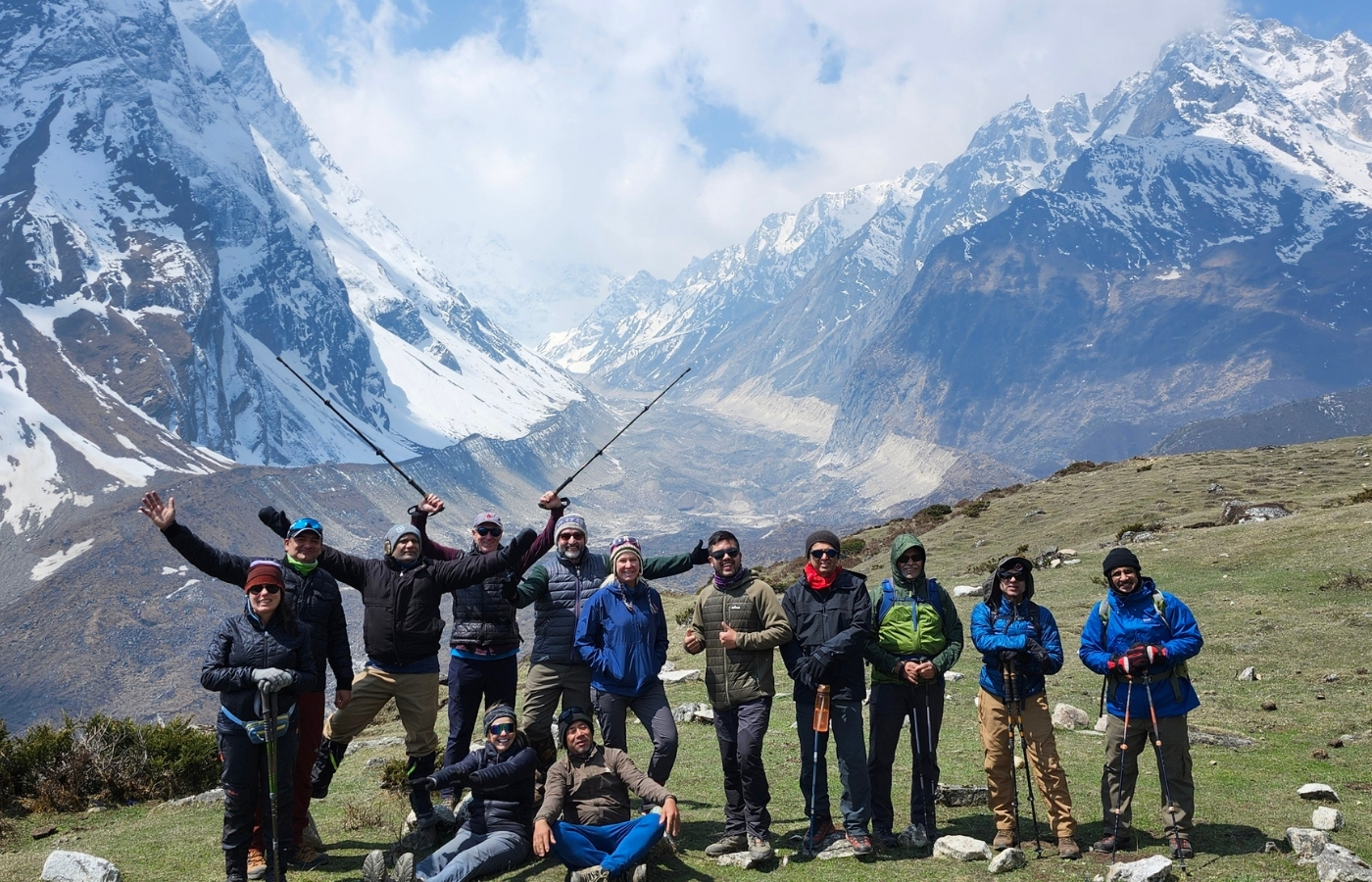
Never Truly Alone
There's no need to worry if you don't find a trekking companion before you set out. Popular routes in Nepal like the Annapurna Circuit and Everest Base Camp attract a steady stream of hikers worldwide, so you'll unlikely be alone for long. Along these trails, you'll often stay in the same lodges, warm up with tea by cozy fireplaces, and cross paths frequently throughout the day. Even without prior arrangements, you'll recognize familiar faces, spark conversations, and often share meals—and sometimes even several days of trekking together.
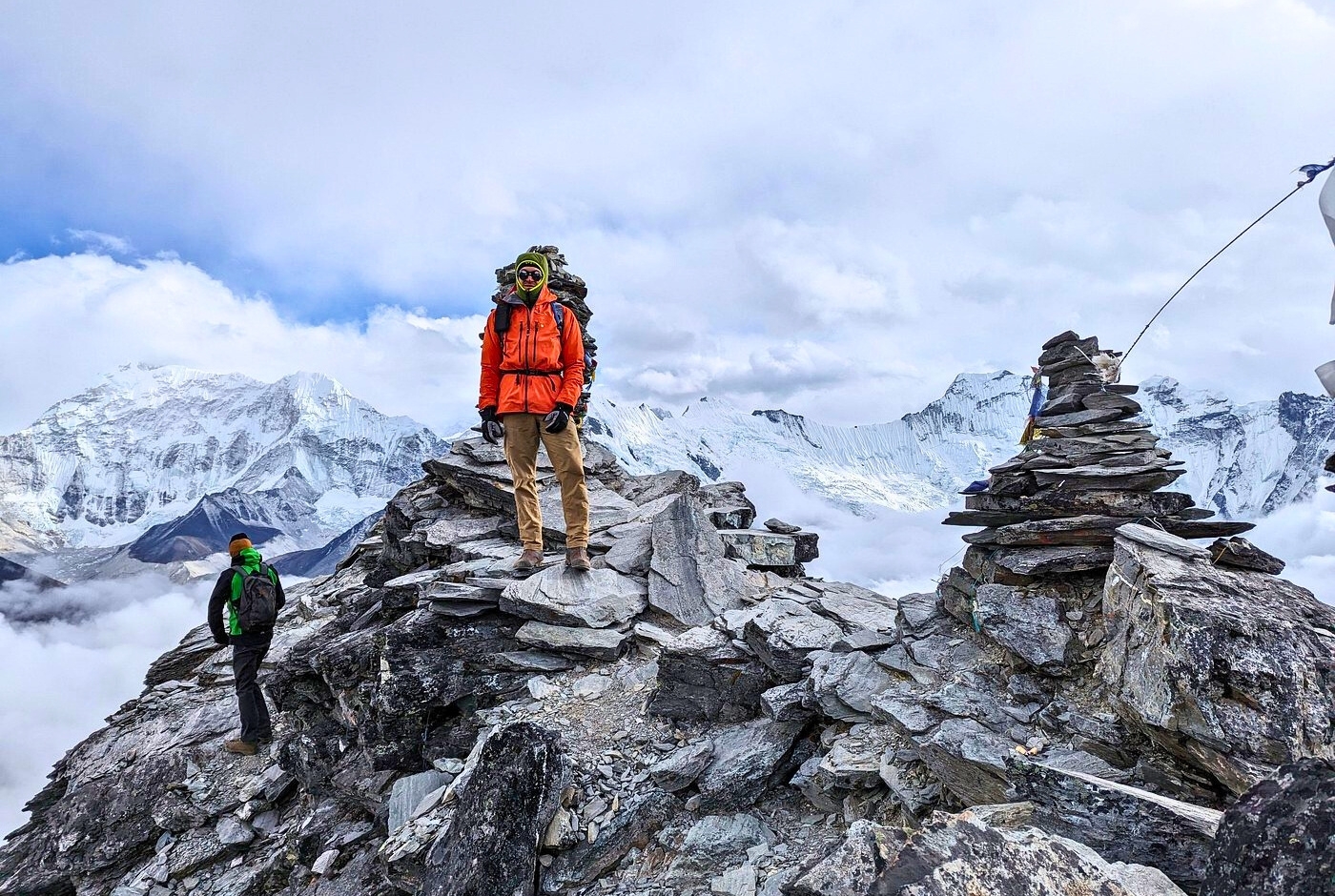
Trekking Realities for Solo Trekkers
Trekking solo in Nepal differs from hiking in Western countries such as Europe, the United States, or Australia, where trails are usually well-marked and day hikes are clearly outlined. There are significant hazards to take into account due to Nepal's vast and isolated terrain. Trails might not have adequate signage, and the weather can change abruptly. In high-altitude areas, injuries such as twisted ankles can pose serious dangers, especially if help isn't nearby or you take a wrong turn. For these reasons, even experienced hikers often hire certified local guides to enhance safety and gain deeper insight into the region's environment and culture.
Trekking Together
Solo travelers can personalize their trip with the Nepal Hiking Team to balance safety and freedom. You can hike independently with a guide, changing the tempo to fit your interests and energy level. Having to adhere to a set schedule as a group. Thus, you maintain authority. During your journey, acquire the comfort of knowing the area and logistical assistance. Nepal offers solo trekkers flexibility by providing guided group treks—like those organized by the Nepal Hiking Team, that connect travelers from around the world into a set group from the start, ensuring companionship without relying on chance encounters.
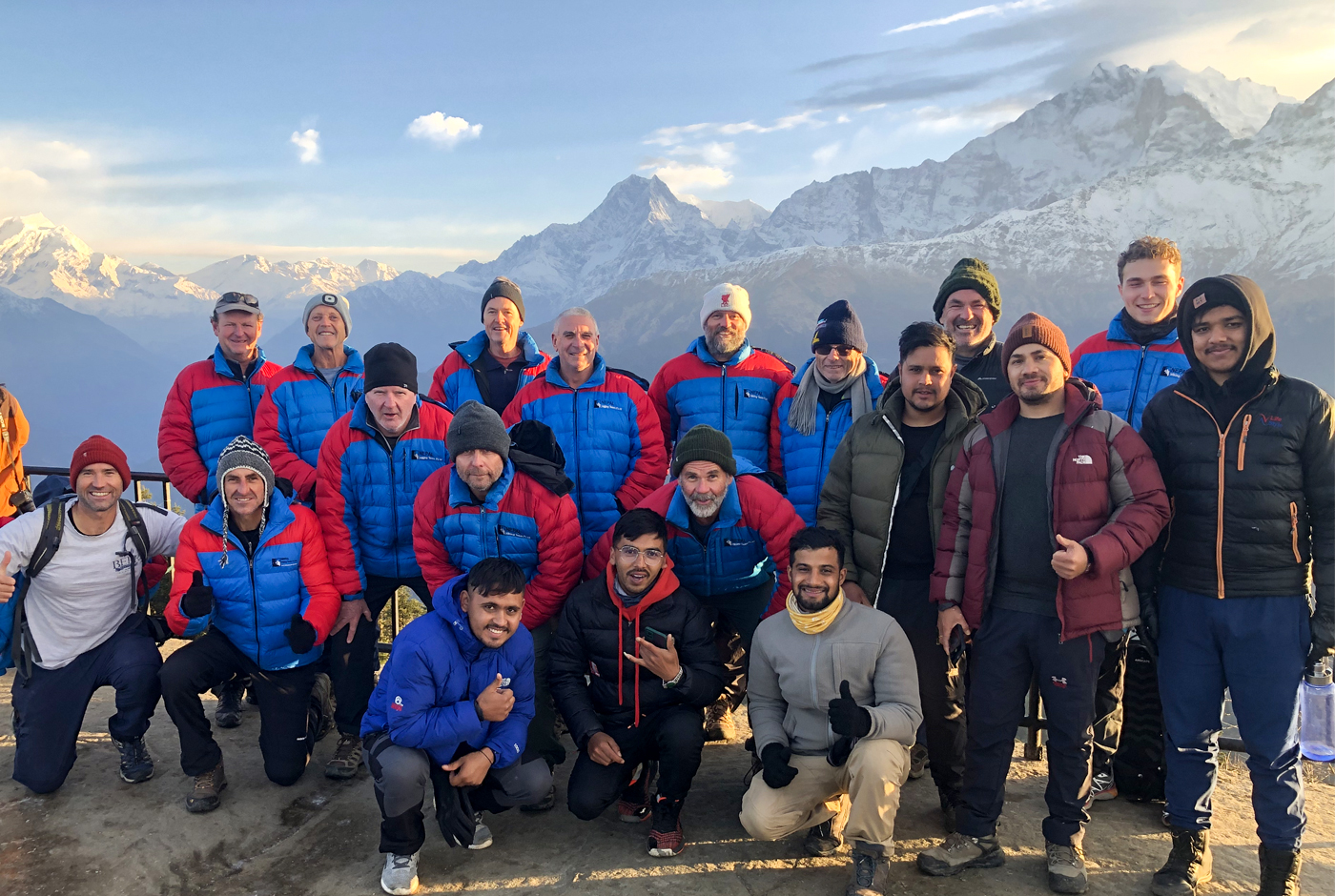
Trail Community
The sense of place is one of the unspoken advantages of Nepal's trekking routes and the communities they foster. Trekkers naturally share an openness that encourages interpersonal connections, whether exchanging travel stories over breakfast or chatting with someone you've seen a few times on the trail. Knowing that others are walking the same path nearby is comforting, even if you're alone. One of the things that makes Nepal unique is its collective rhythm, offering both community when you need it and solitude when you seek it.
Independent you are -you're not Alone.
The hybrid approach is ideal if you want support but still value independence. For a safe and enriching solo trekking experience in Nepal, the perfect choice is to hike independently alongside a local guide who accompanies rather than leads, allowing you to maintain your pace while staying connected to the journey. Programs like those offered by the Nepal Hiking Team pair travelers with knowledgeable, English-speaking guides attentive to cultural differences and safety. Being supported is more important than being led.
Therefore, don't worry if you're traveling alone to Nepal; you won't remain that way for an extended period, whether you meet your future travel companion on a mountain pass or not. Relationships occur organically, so keep caution and openness in check. Though one can easily find friendship here, your safety should always come first.
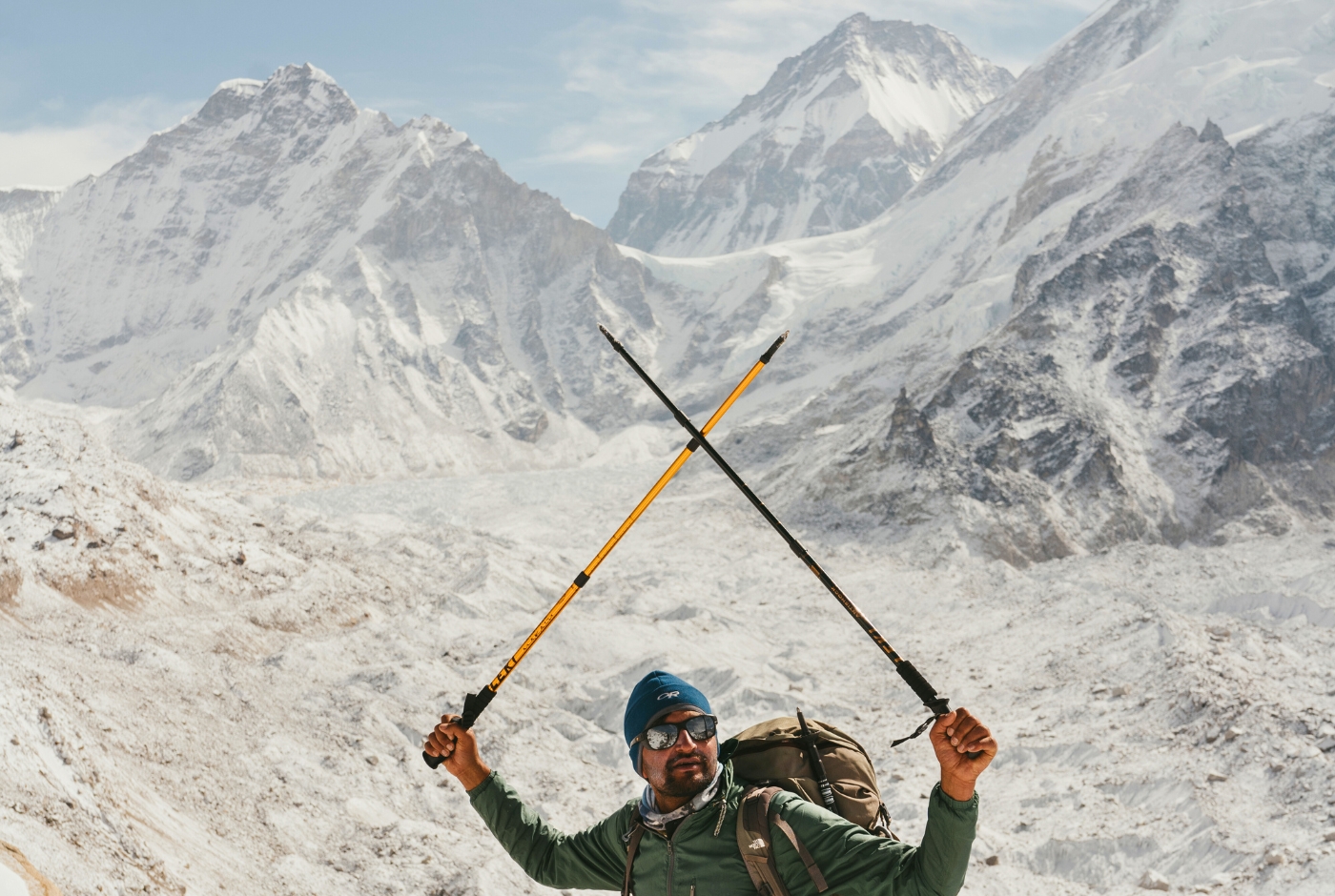
Staying Connected in Nepal:
In recent years, connecting in Nepal has become much easier, particularly for travelers exploring cities like Kathmandu and Pokhara and popular trekking areas. Nearly every hotel, guesthouse, café, and restaurant in these cities offers free WiFi. Along well-traveled routes such as the Annapurna Circuit and Everest Base Camp, many lodges and teahouses provide WiFi access. However, don't expect fast or reliable internet in the mountains—connections are often slow, intermittent, and sometimes come with an additional charge.
What do you use when there is no WI-FI?
A local SIM card is highly recommended for more dependable connectivity and everyday convenience while traveling in Nepal. This enables you to access mobile data when WiFi is unavailable, helping you navigate trekking routes, stay in touch with guides or agencies, and reach emergency services if necessary. SIM cards can be bought immediately upon arrival in Kathmandu, with stalls for the major carriers conveniently located near the airport exit. Although prices here are slightly higher than in Thamel, the difference is minimal and worthwhile if you want to connect immediately.
Local SIM
Nepal's two primary mobile network providers are Ncell and NTC (Namaste), each excelling in different areas. Ncell generally delivers superior coverage in the Everest region, while NTC tends to have a more reliable signal in the Annapurna and Langtang regions. If their phones support dual SIMs, many locals and hikers carry SIM cards from both providers, allowing them to select the one that best suits their schedule.
Other options
While mobile coverage in Nepal has improved significantly, parts of the Himalayas still have no signal. For these remote stretches—especially when traveling solo or during the off-season—relying solely on mobile reception can be risky. This is why carrying a satellite messenger device is essential. These compact, lightweight gadgets can send emergency alerts from deep within the mountains. Some models also offer basic location tracking and the ability to send short messages to loved ones, reassuring them of your safety.
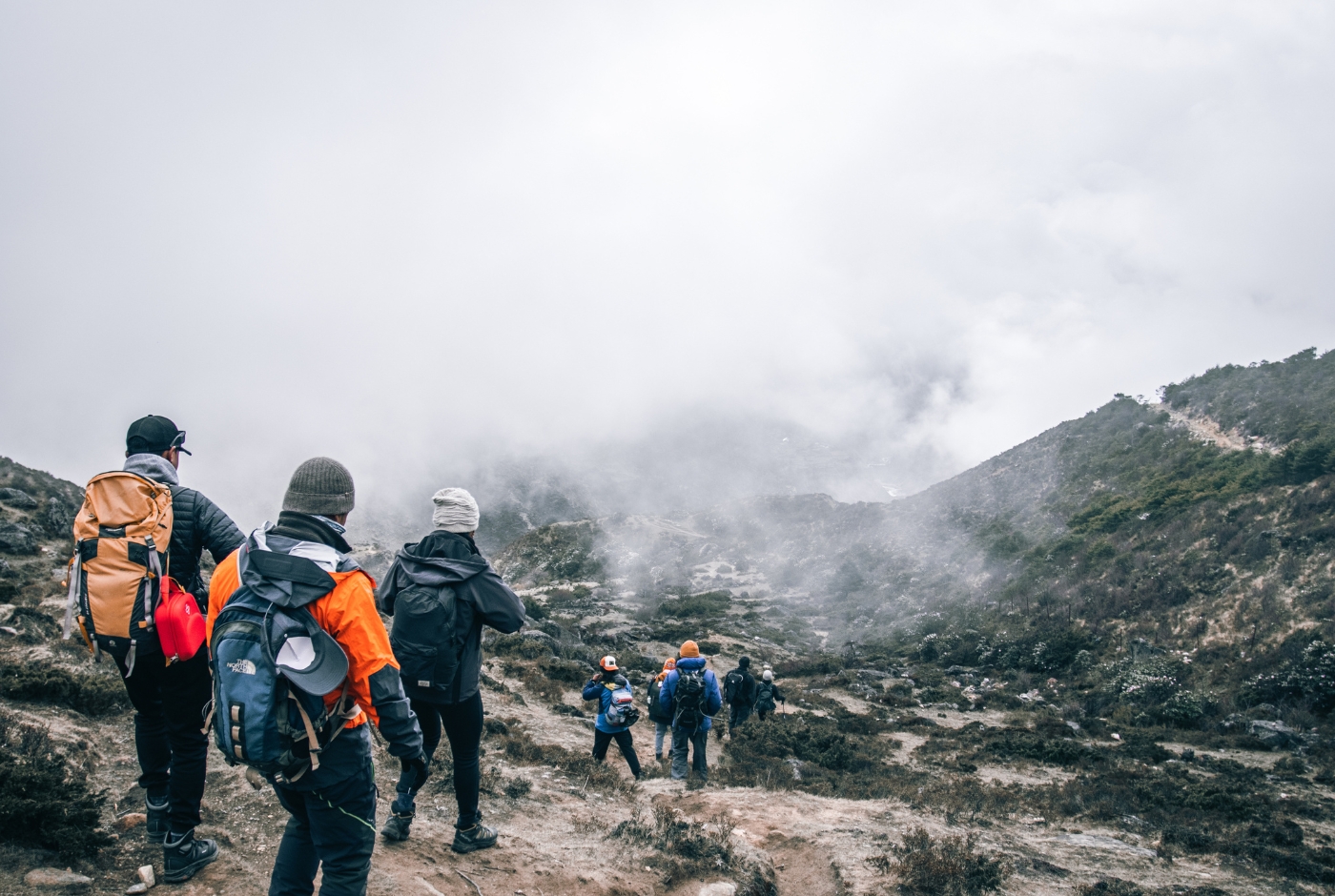
Things to Remember
- Purchase a local SIM card (Ncell or NTC) at the airport or in Thamel for mobile data access.
- Use NTC and Ncell for better coverage in the Everest, Langtang, or Annapurna regions.
- Expect WiFi to be unreliable and slow in the mountains, with additional fees incurred.
- Bring a satellite messenger if you're trekking alone or venturing into remote areas.
- Ensure your travel insurance covers high-altitude, search, and rescue evacuation for medical emergencies.
- Test all your communication devices before heading into the mountains.
Final Thoughts
Solo travel in Nepal shouldn't be overly romanticized. You'll face frustrations, likely get lost a few times, have your plans change unexpectedly, and experience delays like bus stops. However, there are moments of clarity and tranquility in Nepal. You'll find yourself sipping tea while walking among the world's highest peaks, sharing meals with strangers who quickly treat you like family in a local kitchen, and covering trails that make you lose track of time. However, avoid becoming overly suspicious as Nepal's trekking culture thrives on a shared spirit where travelers with similar dreams often cross paths, creating meaningful connections.
You continue to hear Nepal's thing from those despite all the variables. Nepal will feel natural to you. Though not flawless, it's comfortable and appropriate. You're able to walk on the streets without the feeling of being threatened.
Let this be a sign to leap if you're on the fence about going to Nepal—if it seems more like a far-off possibility than a firm plan. Seize the opportunity to confidently discover Nepal's diverse local culture, rich spiritual legacy, and stunning Himalayan scenery. The Nepal Hiking Team will never leave your side from the start. We will help support and guide you as you say your final goodbye. You will get an opportunity to take full advantage of each moment. Allow us to accompany you while you're in Nepal.



